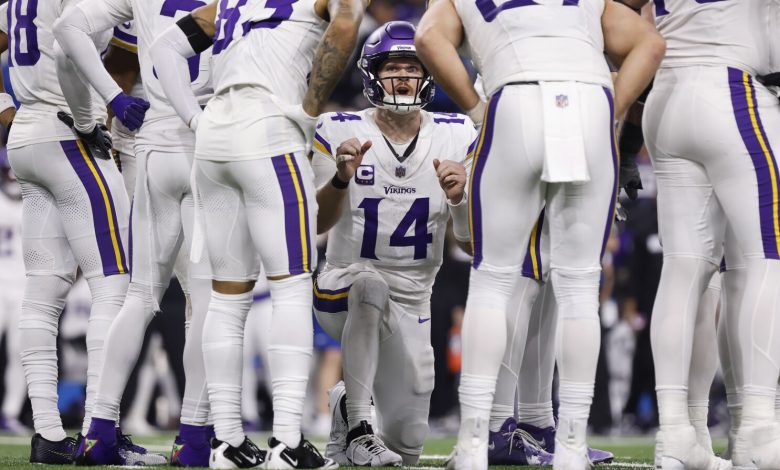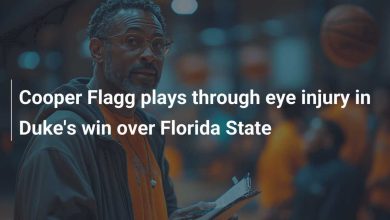Following several days of destructive wildfire in Los Angeles, the NFL transfers the Vikings-Rams playoff game to Arizona.

The National Football League (NFL) has long been the gold standard for managing complex logistical challenges, but few scenarios have tested its resilience more than the situation that unfolded in January 2025. After several days of destructive wildfires in Los Angeles, the league made a groundbreaking decision to move the NFC Wild-Card playoff game between the Minnesota Vikings and Los Angeles Rams to a neutral site in Arizona. The decision, made after consulting with local authorities and ensuring the safety of players, staff, and fans, was one of the first of its kind in recent history and underscored the NFL’s commitment to player safety, fan well-being, and the need to adapt to unprecedented circumstances.
The move of a playoff game to another city is not a decision the NFL takes lightly, especially when it involves one of the most anticipated matchups of the postseason. The Vikings and Rams were already primed for a highly competitive and intense game in Los Angeles, and now, with everything in disarray due to the fires, the stakes have risen in new and unexpected ways. This article will explore the circumstances that led to the NFL’s decision to relocate the Vikings-Rams game, the impact it has on both teams, and what it means for the broader sports world. From the environmental catastrophe that threatened to derail the playoffs to the logistics of moving a game to another state, we’ll break down the situation in detail.
The Wildfires in Los Angeles: A Destructive Force
In early January 2025, Los Angeles was hit by some of the most devastating wildfires in recent memory. Fueled by an unusual combination of high winds, dry conditions, and extreme heat, the fires spread rapidly across the region, forcing thousands of residents to evacuate and causing widespread destruction. The fires, which were some of the largest in California’s history, stretched from the outskirts of the city into the heart of Los Angeles, threatening everything in their path, including homes, businesses, and public infrastructure.
As the fires raged, local authorities and first responders worked tirelessly to control the blazes, but the situation quickly grew dire. The city’s air quality plummeted, making it dangerous for residents to breathe, and the surrounding areas were blanketed by smoke. The public health and safety of the city were in jeopardy, and there was a real risk that the fires could impact the venue for one of the NFL’s biggest playoff games.
The Los Angeles area is home to one of the league’s most iconic stadiums, SoFi Stadium, which was set to host the NFC Wild-Card matchup between the Vikings and Rams. However, as the wildfires grew more destructive, the NFL, alongside local officials, began to explore contingency plans. SoFi Stadium, located in Inglewood, is in close proximity to some of the hardest-hit areas, and with the air quality deteriorating and the fires still burning out of control, there were growing concerns about the safety of players, coaches, and fans.
The decision to move the game to a neutral site, away from the dangers of the fires, was not taken lightly. The NFL’s primary concern was to ensure that the health and safety of everyone involved in the game would not be compromised. After weighing all options and consulting with local officials, the league opted to relocate the game to Arizona, a decision that would allow the game to go ahead as scheduled while also addressing the ongoing crisis in Los Angeles.
The NFL’s Swift Response
The NFL has long been known for its organizational prowess and ability to adapt to challenging circumstances. The league’s handling of the situation surrounding the fires in Los Angeles was no exception. The decision to move the game was made quickly, but it wasn’t a simple task. The logistics of relocating a major sporting event are complex and require careful planning, especially in the middle of the playoffs.
The NFL’s first step was to communicate with both teams, the Minnesota Vikings and the Los Angeles Rams, about the potential for a game relocation. Both organizations were supportive of the league’s decision, understanding the gravity of the situation and the need to prioritize the safety of everyone involved. From there, the NFL worked with Arizona’s State Farm Stadium in Glendale, the home of the Arizona Cardinals, to secure a new venue for the game. This stadium, located outside Phoenix, was chosen for its proximity to the region and its ability to accommodate a large crowd, as well as its advanced facilities and security measures.
Given the tight timeframe and the need to make sure the game could still be played as scheduled, the league also had to coordinate with local authorities, security agencies, and vendors to ensure everything from ticket sales to crowd management to player accommodations could be swiftly and smoothly arranged. The NFL’s media teams worked diligently to update the public on the situation, informing fans about new details regarding the venue and ensuring that ticket holders would be able to transfer their tickets to the new location.
The NFL’s ability to move the game to Arizona in just a matter of days is a testament to the league’s agility in handling emergencies. The speed with which the league mobilized helped ensure that the playoff game could go forward without a significant disruption to the overall postseason schedule.
Impact on the Vikings and Rams
For the Minnesota Vikings, the decision to move the game to Arizona represents an unusual twist in their playoff preparations. The Vikings had been expecting to face the Rams in their home state, and while they knew the Rams would be the more familiar team in the venue, they had prepared mentally for the home-field advantage that Los Angeles typically offers. With the game now moved to a neutral site, both teams are on equal footing, which could shift the dynamics of the contest.
For the Vikings, the primary concern will be how they adjust to playing in a different environment with less time to prepare. The desert conditions of Arizona are drastically different from the coastal climate of Los Angeles, with the dry, hot air of the region potentially impacting players’ conditioning and endurance. Minnesota’s coaching staff, led by Kevin O’Connell, will have to ensure their team is physically and mentally prepared for the nuances of playing in a new setting.
Additionally, while the Vikings may have lost the energy that home fans typically bring to a playoff game, they will now have an opportunity to perform without the distractions of hostile crowds or the pressures that often come with being the visiting team. The game will truly be a neutral contest, with both teams having to adjust to the circumstances equally.
For the Rams, the relocation also removes any potential advantage they might have had by playing in their home stadium. SoFi Stadium, with its cutting-edge technology, massive capacity, and the passionate support of Rams fans, would have been a great place for Los Angeles to thrive. However, moving the game to Arizona means the Rams lose that edge, making it harder to rely on the comforts of home turf.
However, there could be a psychological advantage for the Rams in this situation. Head coach Sean McVay has built a culture of resilience in Los Angeles, and this unexpected move to a neutral site could fuel the Rams’ underdog mentality. While they were initially disappointed by the shift in venue, the Rams are a team that thrives in high-pressure situations, and they may use this change to galvanize their locker room.
For both teams, the logistical challenges of preparing for a game at a neutral site are significant. Travel arrangements, hotel accommodations, and even the familiarity of the playing surface will be unfamiliar to players, and these elements can impact performance. Both teams will have to overcome these hurdles in order to play their best football.
The Broader Implications of the Relocation
While the immediate focus of the NFL, the Vikings, and the Rams is on the game itself, the broader implications of this decision cannot be ignored. The transfer of an NFL playoff game due to natural disasters like wildfires is an extraordinary event in the league’s history. It highlights the increasing reality that climate-related events are becoming more frequent and intense, impacting not just communities, but major sporting events as well.
In recent years, the NFL has made strides in adapting to environmental and climate concerns, including taking action on issues like sustainability and the potential effects of extreme weather on games. The decision to relocate the Vikings-Rams playoff game is a testament to the league’s commitment to ensuring that the game can go on, regardless of the challenges posed by nature. The NFL will likely look back at this moment as a case study for how to manage future crises, be they environmental, political, or otherwise.
For fans, the relocation also means a shift in the atmosphere surrounding the game. While Arizona is a state with a passionate football fan base, it’s not the same as the fervor typically seen in Los Angeles. The energy of Rams fans in SoFi Stadium would have added a special layer to the atmosphere, but the neutral site location will alter the game-day experience for both teams’ supporters. Fans will now have to travel to Arizona, where they’ll compete with other fans for tickets and accommodations. The atmosphere will likely be a mix of purple and blue, as Vikings and Rams fans converge on a neutral venue in search of victory.









